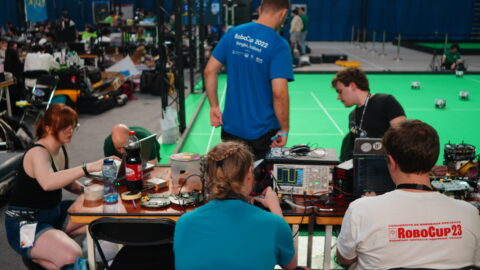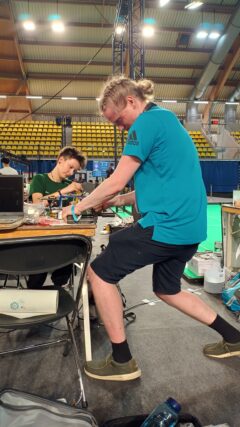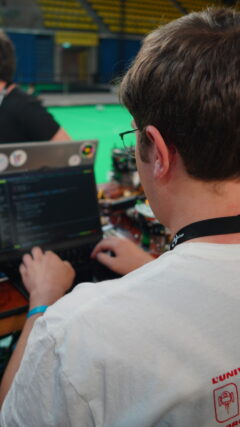By now, the second setup day is almost over, and yet there are problems everywhere. However, these are not only with us. For example, it took up to 4 hours after the hall opened for the light switches for the fields to be turned on. The Vision software – the software for seeing the robots – is very light-sensitive and was calibrated to full light exposure yesterday. Since only about 50% of that was available this morning, all vision-dependent tests could practically not be carried out. At least this year, we have an extra day for setup compared to usual. Now a bit more detail on the sub-teams:
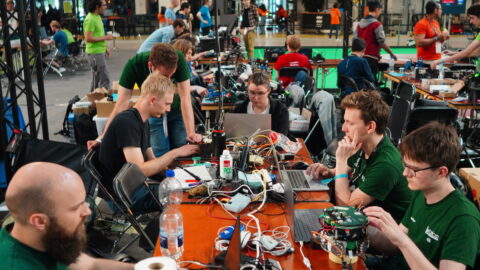
MECHANICS:
First, the mechanics team had to make the robots 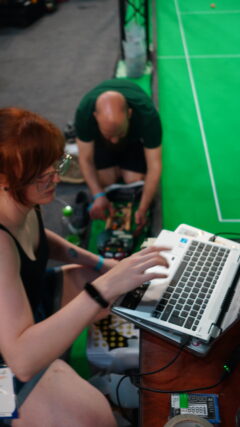 suitable for the tournament. This means securing the screws and cutting the league paper for the patterns on the robots. The former was particularly slow, and the work, as important as it is, is one of the more tedious kinds. Currently, the robots’ kickers are also being calibrated. The software setup was probably the hardest part, as it took a total of 3 attempts and 3 laptops before it worked. Intermittent repairs on the robots, such as on the light barrier, are also always necessary.
suitable for the tournament. This means securing the screws and cutting the league paper for the patterns on the robots. The former was particularly slow, and the work, as important as it is, is one of the more tedious kinds. Currently, the robots’ kickers are also being calibrated. The software setup was probably the hardest part, as it took a total of 3 attempts and 3 laptops before it worked. Intermittent repairs on the robots, such as on the light barrier, are also always necessary.
ELECTRONICS:
Since our electronics sub-team has been preparing for RoboCup for weeks by ordering parts and repairing boards, everything is going quite smoothly here. The biggest problem is the overheating of the robots, where a connection with the regulation is suspected. A solution to this problem could be heat sinks, which are being shaped on-site with considerable physical effort.
STRATEGY: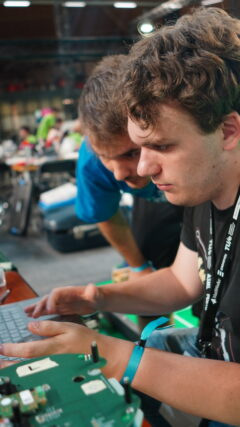
This year, too, the strategy team was not spared from the traditional network problems. However, the problem was eventually found after many hours of frustration and detective work. Meanwhile, continuous improvements are being made to our ball tracking behavior. The penalty shootout is also being improved, and work is being done on the Technical Challenge. Additionally, we have a dedicated sub-sub-team trying to automate the substitution of robots in case of errors since only 5 manual substitutions are allowed under the new rules.
First, the firmware team implemented self-repairing behavior on the robots so that errors can be fixed on their own during the game without substitution. Currently, they are working with the electronics team to get the overheating under control by implementing more energy-efficient algorithms and systematically fixing problem sources.


